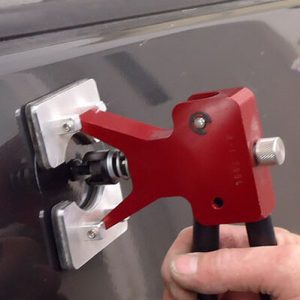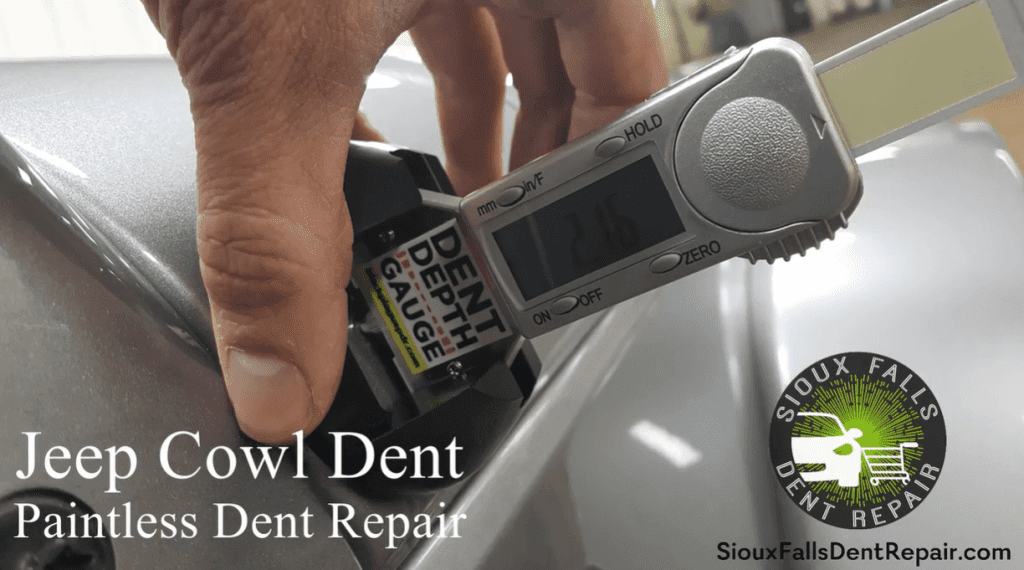
What Kind of Dents Can Be Fixed?
What Kind of Dents Can Be Fixed?
We often get asked “What Kind of Dents Can Be Fixed?” Not every dent is the same and there are many variables when determining what can and cannot be fixed. Even down to each person may have their own standard for a repair.
Shallow Dents
These are typically the easiest to repair assuming we can get a tool to the backside to push the damage out. Even shallow dents in certain metals, lets say aluminum, high strength steel or stainless steel though create extra difficulties. Because these metals are stronger even though they may be physically thinner does not mean they are easy to remove dents from. Stronger metals make even a shallow impact point difficult to remove. This is especially true when we cannot push the damage out and have to use the glue pulling method.
A perfect example for this is kitchen appliances or washer and dryers. Most of todays appliances and the current trend is stainless steel. We have attempted to make repairs on these items and more often then not are NOT able to repair the damage to our satisfaction. That does not mean the customer is not extremely happy with the repair however. If a person can have a dent removed lets say 80 t o 90% that is fantastic for them. The reason being is their alternative for a repair might even be as extreme as replacing the appliance!
Deep Dents
There are many degrees of deep dents. What someone may consider deep we might consider not repairable. We even have a tool called a Dent Depth Gauge from Black Plague PDR to help measure the depth of dents to better estimate damage and know for sure prior to the repair how the damage will turn out. For our pricing structure we are talk tenths of millimeters for depth.
Our pricing guide prices out depths as so:
Shallow Depth <.25mm
Medium Depth: .26-.75mm
Deep Depth: .76+mm
We have repaired dents into the 2mm deep range, but also struggled repairing dents in the 1.0mm range. This is where access to the backside is extremely important. Not only for a dent repair tool but also specialized metal shrinking tools as well.
Glue Pull Dent Repair
When we cannot push damage out with a traditional tool we have to resort to the glue pulling method for repairs. Here we use specialized hot metal adhesives to glue a glue tab to the vehicles paint finish. Don’t worry this entire process is designed specifically for this and will not harm the vehicles factory finish. From there we let the glue try sometimes for only a few seconds. We then use specialized glue pulling devices to pull the damage out. From there we use a release agent to release the glue from the vehicle and it peels right off.

Traditional Methods
The best choice for us to repair dents is to be able to glue pull AND push damage out with a traditional tools. Even extreme damage we may start using the glue pull method to pull a bunch of the damage out. Once the damage has been pulled out we then can go in with a tool and do the final details to finish up a dent repair.
We always tell people 80% of the repair is ONLY 20% of the work. The last 20% of the repair IS 80% of the work. This is why you might see others do repairs and they look not quite finished, or much “better”. Say for instance you have a repair that takes a technician 4-5 hours. It might only take him a hour or so to “rough” the damage out or get it to 80%. The biggest battle is getting the minor waves, wiggles, low and high spots all flat.
Do you have questions about our dent removal process?

